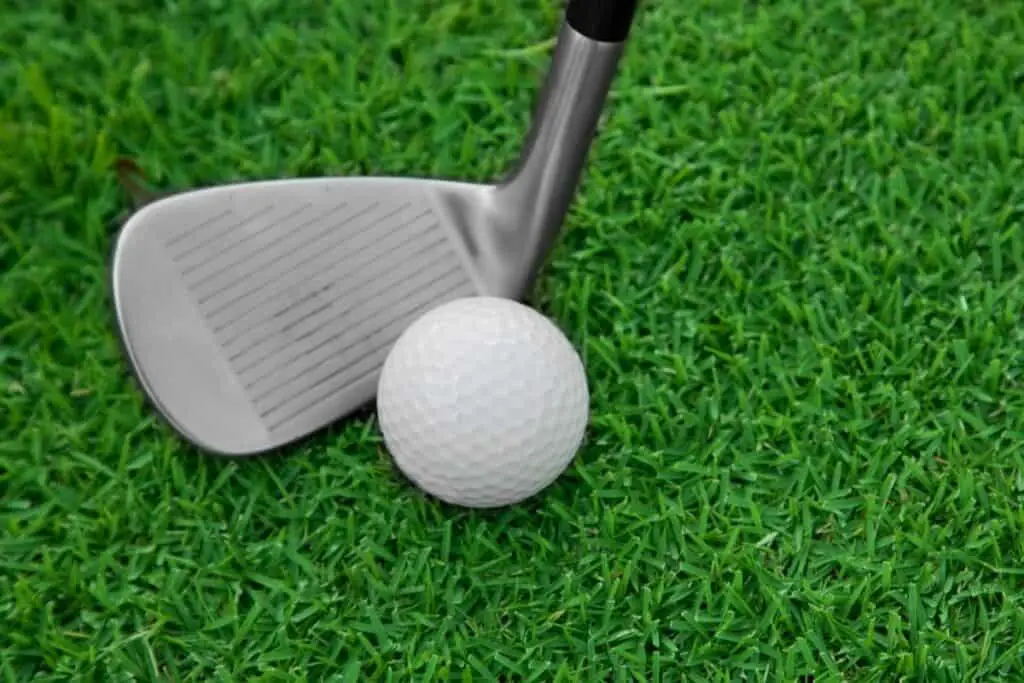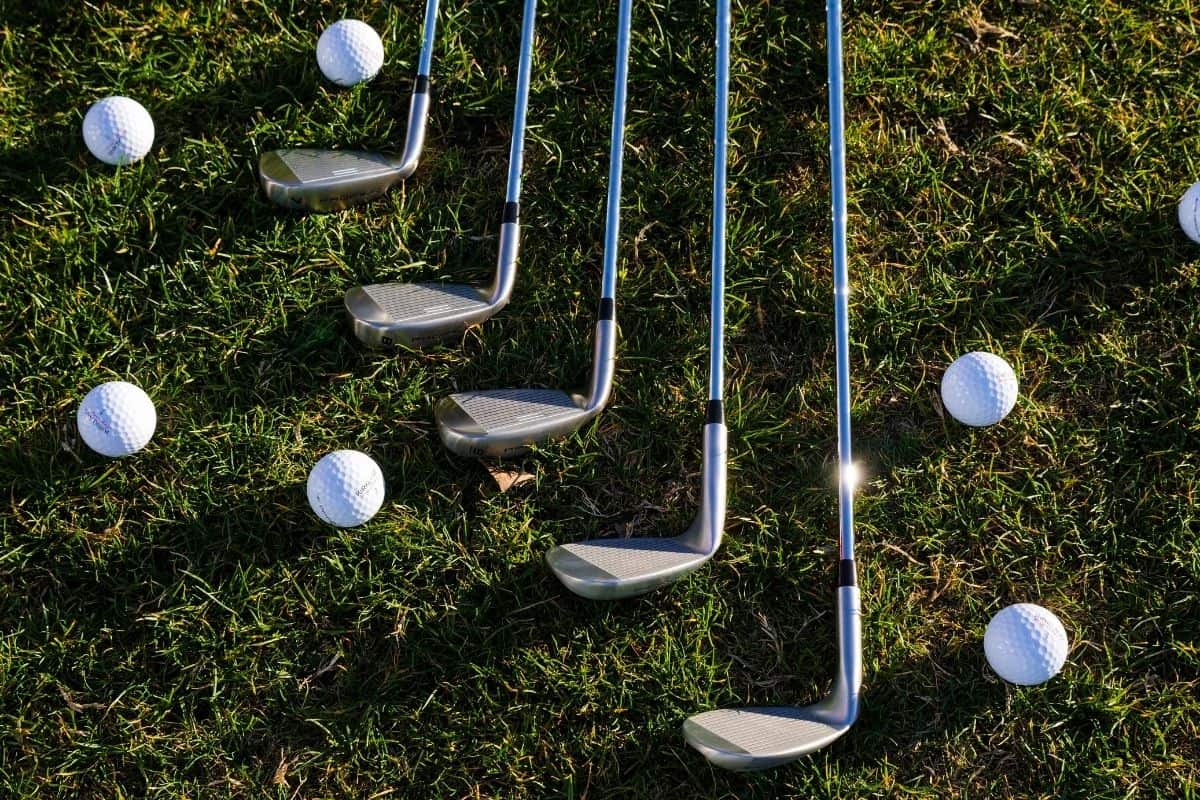The sport of golf is much more than just hitting a ball into a hole. While the main aim of the game is to get your golf ball into the cup in as few shots as possible, there are many intricacies involved with this great game.
One of the main factors you need to consider is the type of golf club you are using. From irons to wedges to putters, you need to carefully think about which club is best for your particular situation on the course.
Even when you have decided on a club to use, you may not realize that there are different types. One example is with the wedge. There are four styles when it comes to the wedge family:
- Pitching wedge
- Gap wedge
- Sand wedge
- Lob wedge
All these wedges have a unique loft that makes them suitable for certain kinds of shots. In today’s article, we will be looking at the 58 and 60 degree wedges in detail. We will be discussing the advantages and disadvantages of both, so you can decide which one is best for you.
Let’s get straight into the swing of things!
58 Vs 60 Degree Wedges

In general, most golfers find it simpler to use a 58-degree wedge than a 60-degree wedge. 58-degree wedges tend to provide more forgiveness and a more accurate distance management for most golfers.
However, this doesn’t mean that a 58-degree wedge is always the most ideal option. It can depend on the wedges you have in your arsenal right now.
We think it’s a good strategy to space your wedges evenly, but we’ll discuss this in further detail below.
58 Degree Wedge
A 58-degree wedge is regarded as the definition of a lob wedge. This type of club is generally used to lob the ball high into the air. Likewise, wedges like this can also be utilized to “easily” chip out of bunkers (we’ve all been there) and on downhill lies.
Generally speaking, the highest lofted club most players should use is a 58-degree wedge. We suggest that you try and aim for a bounce of 10 degrees or more on the club for the best results on the course.
The club will not dig too deeply into the sand or other soily terrain because of the increased bounce. That’s why this club performs well outside the sand and may be the best option for golfers who like to leave behind a trail of divots.
One question many ask is whether a 58 degree wedge can be used as a sand wedge. Well, when your ball lands in a bunker (it was a gust of wind that came from nowhere, right?) or you have to hit the ball a small distance, a 58-degree wedge can be a solid choice.
The main thing to remember is that you’ll want a wedge with a bounce of 10 degrees or more.
A lob wedge is definitely the last option if you’re looking for new wedges. Because the sand wedge is one of the most commonly used clubs in your kit bag, it’s likely the first move.
As for the angle of a sand wedge, this is typically around 54 or 56 degrees, so a little less than your 58 degree wedge.
60 Degree Wedge
So, we now know what sort of shots a 58 degree wedge is suitable for, but what about a 60 degree club?
As with a 58 degree wedge, a lob wedge is defined as a 60-degree wedge. Again, this is used to propel the ball high into the air and fall sweetly on the green if all goes to plan!
For example, a 60 degree wedge is a great option for hitting the golf ball over areas of water or bunkers and having it rest on the green.
Many golfers like to keep a 60 degree in their kitbag as it can come in use for certain circumstances.
For instance, a 60 degree wedge can be great for chipping half-swing shots or getting the ball over bunkers. However, it can be difficult to hit long shots sometimes.
Because of this difficulty, some golfers replaced it with a sand wedge instead. But, we recommend you try a 60 degree wedge out first before making up your mind once and for all!
Whether you’re an average player or a pro, you will probably prefer to stick to a 60 degree wedge for the majority of your strokes. This is because it is typically the easiest to use for consistent shots.
For those with a low handicap, a 60 degree wedge is a great choice. As for the rest of us with higher handicaps, a 60 degree wedge is not a necessity.
So, “is it possible to use my 60 degree wedge in the form of a sand wedge?” we hear you ask – when you’re in a towering bunker and have to hit the ball as high to get out, a 60-degree wedge is a solid choice.
Just keep in mind that you’ll have to have a wedge with a 10-degree bounce or more.
The Distance To Hit A 58 Degree Wedge

Golfers typically hit a 58-degree wedge around 80 or so yards, but distances can fluctuate from 50 to 105 yards.
The greater number is for players who use their wedges for full swings. However, the majority of golfers only use their wedges for a 1/2 or 3/4 swing.
Of course, this can vary from one golfer to another depending on skill level and strength. Another reason why the distances can vary from 50 to 105 yards is that some golfers take a half swing with their wedges that are somewhat shorter rather than a full swing.
Remember, these wedges are designed for precision and accuracy rather than overall distance.
The Distance To Hit A 60 Degree Wedge
Overall, it has been found that golfers tend to reach a distance of approximately 74 yards with their 60-degree wedge. However, the overall range may be anywhere from 60 to 100 yards.
Stronger hitters, who tend to hit the ball further, will often be in the 100-yard area with a full swing, but the majority of golfers only typically take a 1/2 or 3/4 swing when using 60 degree wedges.
If a golfer were to take a complete swing with their 60 degree club, they ought to be able to cover about 100 yards. Many golfers, however, swing at half or just a 3/4 speed, which explains why the average distance is approximately 74 yards.
In general, professional players typically use 60 degree wedges whereas your regular, standard player is better suited to a 58 degree wedge.
When To Use A 60 Degree Wedge

A 60-degree wedge is commonly used around the perimeter of the green. But it can also be used for other purposes.
When should you use your 60-degree wedge? Here are some examples:
Full Swing
On the driving range, try out your 60-degree wedge and test how far you can hit the ball. It’s without doubt that some 60-degree wedges are better for longer shots than others. This is because they have varied bounce levels and grind.
Generally speaking, you should be capable of hitting a 60-degree anywhere between 50 and 75 yards on average.
The only issue is that if you miss the 60-degree wedge by a just fraction of a degree, it may end in traveling past the green.
Of course, with whatever club you use, there is always a danger of mishitting, but the 60-degree is renowned as one of the best clubs for using across a green.
A Sand Shot
Although many golfers use their 58 degree wedge for sand shots, a 60 degree wedge can sometimes be the better option. It’s all about being comfortable with your club.
Remember, a 60 degree wedge sports 4 more degrees of loft than its traditional counterpart. Therefore, this makes it easier to chip the ball out of the bunker and control it better so it stops sooner on the green.
Stuck in a deep bunker? We suggest using a club with a high amount of loft. However, if you find yourself in a 20-yard bunker, a 58 wedge may be the better choice as the ball won’t travel as quickly.
Chip Shots
We all need to play a chip shot during a round of golf. This is when the ball lands just off the green. If this happens to you, we recommend using a 60 degree wedge. This is down to its amount of spin and loft.
Known as ‘short siding’ yourself, when you land just off the green, you will need to play a shot that goes up and down before stopping quickly.
For this, use a 60 degree wedge. You will achieve a great amount of spin, if needed, and a good launch.
When To Use A 58 Degree Wedge
As we have discussed, a lob wedge can be defined as a 58-degree wedge that is used to lob the ball high. This wedge can also be utilized to chip out of bunkers and on downhill lies.
Here are some examples of when to use a 58 degree wedge:
Sand Shots
When your shot has gone a bit astray, and you have landed in a deep bunker, a 58 wedge is a great option to use. It is also great for hitting the ball just a short distance. As we stated, however, the main thing to remember is that you’ll need a wedge with a bounce of 10 degrees or more.
On Firm Courses
If you’re playing on a firm course with tight lines, a 58 degree wedge is a superb option. It will hit the ball a good distance and produce some degree of spin if required when landing on the green.
Chip Shots
A 58 degree wedge is a handy club when you land just outside the green. It is also one to go to for shots within 86 yards of the cup.
In Summary
Choosing between a 58 and 60 degree wedges often comes down to personal choice. It also depends on the type of shot you want to play and the terrain you find your golf ball in.
For more experienced players, we recommend using a 60 degree wedge more often. As for standard golfers, a 58 degree wedge will typically do the job.
We hope this article has helped you find out what you were looking for. Check out our other articles to find out more and improve your golfing game!
- Should Tee Boxes Be Level? - January 23, 2024
- 3 Hybrid Distance - November 15, 2023
- Innovations in Golf Mobility: An In-depth Review of Top Golf Scooters - October 12, 2023

